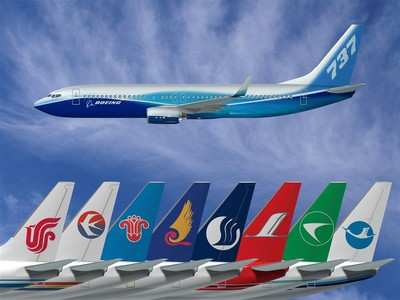Cadets From Two Chinese Airlines Train In Australia
By ANN Associate Editor Mark Sletten
 Flight training specialist Alteon
has begun training its first class of cadets seeking a ticket under
a new International Civil Aviation Organization (ICAO) licensure
standard called the Multi-Crew Pilot License (MPL). The cadets are
slated to fly for two different Chinese airlines and have begun
training at Alteon's Brisbane, Australia facility.
Flight training specialist Alteon
has begun training its first class of cadets seeking a ticket under
a new International Civil Aviation Organization (ICAO) licensure
standard called the Multi-Crew Pilot License (MPL). The cadets are
slated to fly for two different Chinese airlines and have begun
training at Alteon's Brisbane, Australia facility.
This class represents what Alteon calls a "beta" group. Their
instructors will closely evaluate both the cadets and the
curriculum while working closely with the instructional design
experts in fine tuning the program. By the time the next six cadets
start training, they, the airline they will eventually fly for and
Alteon should all have a very good idea of what to expect from the
others.
As ANN reported, ICAO's MPL
standard -- just adopted late last year -- reduces the amount of
actual flight time a cadet must accumulate before he or she is
licensed. Most of the reduction in actual flight time is replaced
with simulator training. That's raising eyebrows among some
traditionalists (those who've "paid their dues") here in the US who
argue actual flight time can't be effectively replaced with
simulator training -- at least not in the amount the new rule
allows.
Here in the US pilots must accumulate 250 flight hours -- 50 of
which may be in an approved flight training device under the
supervision of an instructor -- before attaining a commercial
license. Of course, we all know it's a rare individual who'll find
him or herself in the right seat of a commercial aircraft with only
250 hours. Most will spend many more hours as an instructor
teaching the next batch or two of students before they accumulate
enough hours to become marketable in the US.
 Under the ICAO's new
standard, MPL holders will only need 240 hours -- up to 170 of
which may be simulator time. The magnitude of the difference
between standards seems incomprehensible at first... it becomes
even more so when you consider airlines in countries adopting this
standard have every intention of placing freshly minted MPL holders
directly into the right seat!
Under the ICAO's new
standard, MPL holders will only need 240 hours -- up to 170 of
which may be simulator time. The magnitude of the difference
between standards seems incomprehensible at first... it becomes
even more so when you consider airlines in countries adopting this
standard have every intention of placing freshly minted MPL holders
directly into the right seat!
In truth, the MPL represents much more than a reduction in
required actual flight time. It's a complete paradigm shift in
training philosophy, and Alteon thinks it has the right recipe to
make it effective and safe.
Alteon says it gains efficiencies in the MPL training program by
increasing the relevance of each training lesson, maximizing
simulator training and minimizing the amount of negative training
-- the learning and unlearning inherent in the traditional training
path. Those efficiencies allow cadets to focus on mastering
competencies and skills in the shortest possible time without
compromising safety. The MPL training program is similar to the
training program the military uses for their pilots; it is focused
on preparing the pilot for the job.
ANN had the opportunity to speak with Alteon's vice president
for first officer programs Marsha Bell about its new MPL training
program.
Bell says ICAO developed MPL in response to requests from
countries -- primarily in the Asia-Pacific region -- that
haven't the aviation training infrastructure to keep up with
aviation growth. Some countries (China, India, etc.) have a growing
need for pilots that far outstrips their training capability. Add
to that new, more stringent rules on foreign student training in
the US and abroad -- fallout from the terrorist attacks of 9/11 --
and you can see how a country might quickly find itself with a
severe pilot shortage.

Bell stresses MPL training, from the outset, has as its primary
goal a safe, competent first officer qualified to fly on a
crew-served aircraft. As such, an MPL holder will not be qualified
(nor required) to fly an aircraft unsupervised.
Setting aside for a moment the "good or bad" of that
goal... if you accept it as the end product of the MPL, the
training required to attain it makes much more sense.
Coming Saturday: an in-depth discussion of
Alteon's plans for its six MPL cadets in
Australia.
 SpaceX to Launch Inversion RAY Reentry Vehicle in Fall
SpaceX to Launch Inversion RAY Reentry Vehicle in Fall Aero-News: Quote of the Day (04.23.24)
Aero-News: Quote of the Day (04.23.24) Aero-News: Quote of the Day (04.20.24)
Aero-News: Quote of the Day (04.20.24) ANN's Daily Aero-Linx (04.20.24)
ANN's Daily Aero-Linx (04.20.24) Aero-News: Quote of the Day (04.21.24)
Aero-News: Quote of the Day (04.21.24)





